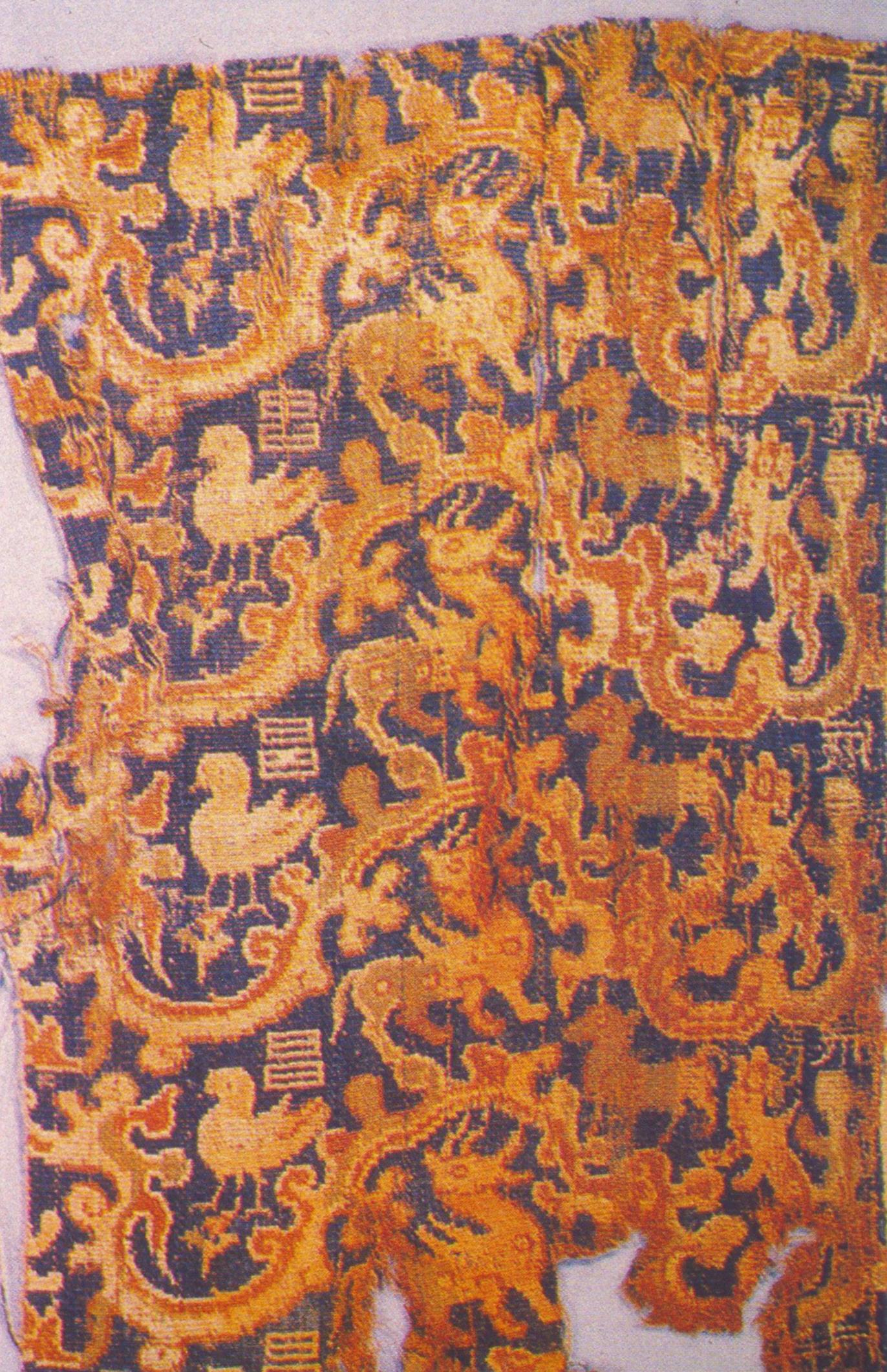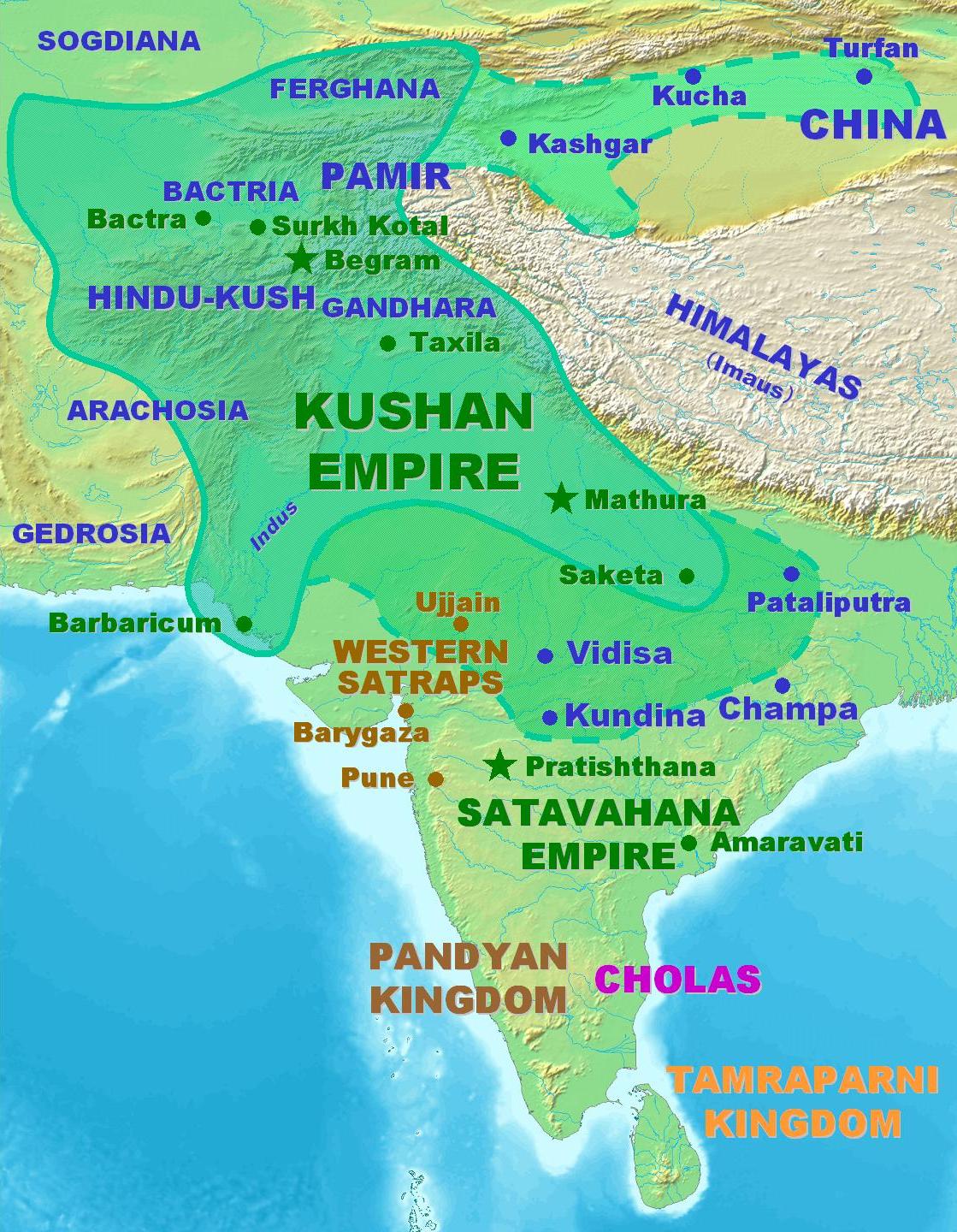|
Shanshan
Shanshan (; ) was a kingdom located at the north-eastern end of the Taklamakan Desert near the great, but now mostly dry, salt lake known as Lop Nur. The kingdom was originally an independent city-state, known in local Gandhari documents as '' Kroraïna'' (Krorayina, Kröran) – which is commonly rendered in Chinese as ''Loulan''. The Western Han dynasty took direct control of the kingdom some time after 77 BCE, and it was later known in Chinese as Shanshan. The archaeologist J. P. Mallory has suggested that the name Shanshan may be derived from the name of another city in the area, '' Cherchen'' (later known in Chinese as ''Qiemo''). A local variety of Gandhari was used in the kingdom for administrative, literary, and epigraphic purposes. Scholars such as Thomas Burrow have suggested the local population might have spoke a hypothetical Tocharian C, as evidenced by the loanwords in those Gandhari documents. Location The kingdom of Kroraïna (Loulan), later Shanshan, was pro ... [...More Info...] [...Related Items...] OR: [Wikipedia] [Google] [Baidu] |
Loulan Silk Fragment
Loulan ( zh, t=, p=Lóulán < ''lo-lɑn'' < ''rô-rân''), also known as Kroraïna () in native documents or Krorän in later Uyghur (), was an ancient kingdom based around an important city along the already known in the 2nd century BCE on the northeastern edge of the |
Kashgar
Kashgar () or Kashi ( zh, c=喀什) is a city in the Tarim Basin region of southern Xinjiang, China. It is one of the westernmost cities of China, located near the country's border with Kyrgyzstan and Tajikistan. For over 2,000 years, Kashgar was a strategically important oasis on the Silk Road between China, the Middle East, and Europe. It is one of the oldest continuously inhabited cities in the world and has a population of 711,300 people (). Kashgar's urban area covers , although its administrative area extends over . At the convergence point of widely varying cultures and empires, Kashgar has been under the rule of the Chinese, Turkic, Mongol and Tibetan empires. The city has also been the site of a number of battles between various groups of people on the steppes. Now administered as a county-level city, Kashgar is the administrative centre of Kashgar Prefecture, which has an area of and a population of approximately 4 million . Kashgar was declared a Special Economic ... [...More Info...] [...Related Items...] OR: [Wikipedia] [Google] [Baidu] |
Qiemo County
Qiemo County ( zh, c= ) as the official romanized name, also transliterated from Uyghur as Qarqan County ( Uyghur: ; zh, c=恰尔羌县), is a county under the administration of the Bayin'gholin Mongol Autonomous Prefecture in the Xinjiang Uyghur Autonomous Region of the People's Republic of China, bordering the Tibet Autonomous Region to the south. Its area is and, according to the 2002 census, it has a population of 60,000. The county seat is at Qiemo Town. Name "Qiemo (W-G: Ch'ieh-mo) 且末 = modern Cherchen ( zh, c=车尔臣) or Charchan (Uyghur: ''Qarqan''). There has been uncertainty about this name as Chavannes (1907), p. 156, and then Stein (1921a), Vol. I, 296 ff., gave an incorrect romanization for the first character. Chavannes, using the French EFEO romanization system, gave ''tsiu'', and Stein used the Wade-Giles equivalent, ''chü''. In fact, the character is correctly rendered ''k'ie'' in EFEO, ch'ieh in Wade-Giles and qie in pinyin. Nevertheless, there ha ... [...More Info...] [...Related Items...] OR: [Wikipedia] [Google] [Baidu] |
Charklik (ancient Settlement)
Charklik or Charkhlik () is an archaeological site named after the town of Charkhlik (Qakilik), in Ruoqiang (Qakilik) County, Xinjiang Uyghur Autonomous Region of the People's Republic of China. Together with the nearby Miran site, they correspond to two ancient capitals of Shanshan, Wuni () and Yixun (). However, it is as yet unclear which site correspond to which capital. History Charklik was the name for an ancient settlement of the kingdom of Kroraina (Chinese: Loulan; later Shanshan) from at least as far back as the 1st century BCE. During the latter part of the Former Han and throughout the Later Han the capital of the kingdom of Shanshan was known as Yüni (), thought to have been located near the present town of Ruoqiang at Charklik. The explorer and archaeologist Aurel Stein visited the small oasis of Charklik in 1906, where he found a little village that was the official headquarters of a very large district, almost entirely desert, and which included th ... [...More Info...] [...Related Items...] OR: [Wikipedia] [Google] [Baidu] |
Ruoqiang Town
Ruoqiang Town zh, c= , p=Ruòqiāng; Uyghur: Чакилик: Qakilik or Charklik (ancient settlement), Charklik is a town (China), town in Ruoqiang County, Bayin'gholin Mongol Autonomous Prefecture in southeastern Xinjiang, People's Republic of China. Ruoqiang Town is the county seat of the Ruoqiang County, and therefore is the place that less detailed maps label as "Ruoqiang County" or just "Ruoqiang". The postal code is 841 800. There is a two-laned asphalt highway to Korla, north, and west to Hotan. There is no motorable road east to Dunhuang in Gansu, but one can now drive southeast through the Altun Shan range and then north through part of the Tsaidam to Dunhuang. Names Lionel Giles has recorded the following names for Ruoqiang Town (with his Wade-Giles forms of the Chinese names converted to pinyin): :"''Yixun'', or Yixiu, capital of Shanshan after 77 B.C. (Note: This is an incorrect identification, the capital's name was, in fact, Yüni 扜泥.) :Shanshan Zhen [Sui] ... [...More Info...] [...Related Items...] OR: [Wikipedia] [Google] [Baidu] |
Lop Nur
Lop Nur or Lop Nor (, , from an Oirat Mongolic name meaning "Lop Lake", where "Lop" is a toponym of unknown origin) is a now largely dried-up salt lake formerly located within the ''Lop Depression'' in the eastern fringe of the Tarim Basin in the southeastern portion of the Xinjiang Autonomous Region, northwestern China, between the Taklamakan and Kumtag deserts. Administratively, the lake is in Lop Nur town (), also known as Luozhong () of Ruoqiang County, which in its turn is part of the Bayingolin Mongol Autonomous Prefecture. The lake system, into which the Tarim River and Shule River drain from the west and east respectively, is the last remnant of the historical post-glacial Tarim Lake, which once covered more than in the Tarim Basin but had progressively shrunk throughout the Holocene due to rain shadowing by the Tibetan Plateau. Lop Nur is hydrologically endorheic, it is landbound and has no outlet, and has relied largely on meltwater runoffs from the Tiansh ... [...More Info...] [...Related Items...] OR: [Wikipedia] [Google] [Baidu] |
Fu Jiezi
Fu Jiezi (), born in Qingyang, Gansu, was responsible for the assassination of the Loulan king Angui in 77 BC. Career Although fond of study, at fourteen years of age he threw his writing-tablets aside, saying with a sigh, “Tis in foreign lands that a hero must seek renown; how can I let my life pass away as an old bookworm?” The rulers of the Loulan countries had killed some Chinese envoys; and in 77 BC, with a view to punishing them, supreme general Huo Guang laid before the Emperor Zhao of Han a plan for sending Fu, then inspector of the stables at P'ing-lo Palace, to go out and stab the king to death. Fu volunteered to proceed as envoy to Ferghana or Khokand. He carried with him gold and silk, and claimed it was a gift for the King of Loulan. The king was delighted; and he became intoxicated while drinking with Fu, who now took the king aside for a private word. Two of his guards followed and stabbed the king to death, and all his noblemen and attendants fled in confusion. ... [...More Info...] [...Related Items...] OR: [Wikipedia] [Google] [Baidu] |
Korla
Korla,The official spelling according to also known as Kurla, United States National Geospatial-Intelligence Agency or Kuerle, is the second largest city by population in Xinjiang, China. It is a county-level city and the seat of Bayingolin Mongol Autonomous Prefecture, the largest prefecture of China. Korla has existed since at least the Han dynasty. Korla is known for its production of fragrant pears and is a production center for the Tarim oil fields. History Han dynasty Korla was known as Yuli () (reconstructed pronunciation of first character: *i̯wəd) during the Han dynasty. Yuli is said in the Hanshu or 'History of the Former Han' (covering the period 125 BCE to 23 CE), to have had 1,200 households, 9,600 individuals and 2,000 people able to bear arms. It also mentions that it adjoined Shanshan and Qiemo ( Charchan) to the south. In 61 CE, the Xiongnu led some 30,000 troops from 15 kingdoms including Korla, Karashahr, and Kucha in a successful attack on Khota ... [...More Info...] [...Related Items...] OR: [Wikipedia] [Google] [Baidu] |
Qiemo Town
The oasis town of Qiemo or Cherchen (, ; Uighur: Qarqan, also spelled Charchan) is the capital of Qiemo County, Bayingolin Mongol Autonomous Prefecture, Xinjiang, China. It is on the Qiemo River and at the foot of the Qilian Mountains, on the Southern Silk Route. In ancient times, the town and the kingdom it controlled were jointly known as Shanshan. History Settlement in the Qiemo area dates back to the Bronze Age. The town is located along the ancient Jade Road that traded with the earliest Chinese dynasties, and Bronze Age rock carvings were found south of town along another ancient trade route to what is now Tibet. Mummies dated to 1,000 BCE were discovered at the Zaghunluq site less than six km southwest of the city center. A particularly well-preserved one is known as the Cherchen Man. Qiemo existed as an independent kingdom during the Former Han dynasty (123 BCE to 23 CE). It was described in the Hanshu, chapter 96A thus: Although the town is described in docum ... [...More Info...] [...Related Items...] OR: [Wikipedia] [Google] [Baidu] |





